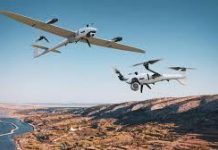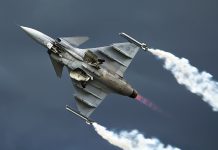
The German army’s receipt of the enhanced Puma IFVs is expected to be slightly postponed due to necessary software adjustments, as indicated by Voice of Europe. The cutting-edge Pumas are projected to start being delivered by the end of February 2024.
The comprehensive S1 upgrade includes the incorporation of advanced, high-resolution day and night vision camera systems, the MELLS light missile system [also known as Rafael Spike LR in Israel], state-of-the-art digital radio equipment, and the advanced IdZ-ES future soldier system.
Currently, the German army is equipped with modern vehicles up to the C1 standard, including 40 units that were specifically upgraded for NATO’s Very High Readiness Joint Task Force [VJTF] a few years ago.
Subsequently, a decision was made in Berlin to upgrade the entire Puma IFV inventory. Initially, the Bundeswehr had plans to upgrade 154 vehicles. However, this number was increased in 2021 with an additional 143 units, leading to a total modernization of the existing Puma IFV land vehicle fleet.
The Puma IFV, while bearing similarities to other existing Infantry Fighting Vehicles [IFVs], distinguishes itself through its high-tech features. Notably, the Puma has the capability to adjust and accommodate different armor, making it a versatile contender in its category.
A standout feature of the Puma is its compact, unified crew cabin, which fosters optimal crew interaction. This unique design allows for quick replacement of the driver or gunner during emergency situations, all within a well-protected and minimal space.
To ensure the safety and comfort of the crew, the cabin is equipped with an air-conditioning system, as well as nuclear and chemical sensors for detecting airborne threats. Additionally, it features a fire suppression system that uses non-toxic agents, with the engine compartment having its own separate fire extinguishing system. The only minor deviation from the nearly cubical cabin design is the driver’s station, which is located at the front, ahead of the gunner and turret.
The Puma’s exterior hull, excluding the turret, is streamlined and low-profile, designed to minimize its visual signature and reduce shot traps. Notably, the entire vehicle, when fully armed and ready for combat, can be air-transported within the Airbus A400M tactical airlifter.
In terms of crew capacity, the Puma, accommodating 3+6 persons, is on par with other similar-weight vehicles such as the US M2 Bradley IFV, the Marder, and the CV9040. However, it falls slightly short of vehicles like the CV9030 and CV9035 that can carry 3+8 persons.
As for the Puma IFV’s primary armament, it is equipped with the Rheinmetall MK30-2/ABM autocannon – a 30mm, fully-stabilized artillery unit. This gives the vehicle a significant advantage when engaging with both armored and soft targets.
Additionally, the Puma IFV features a coaxial machine gun, typically a 5.56mm or 7.62mm caliber model, positioned next to the main cannon. This support weapon is primarily used for engaging infantry and light targets.
The Puma IFV also includes a missile launching system for added protection. This system can deploy various types of anti-tank guided missiles (ATGMs), such as the Spike-LR or the MELLS. With these missiles, the Puma IFV can effectively engage and destroy armored vehicles, even at long distances.
Moreover, the Puma IFV houses a remote weapon station [RWS] mounted on the vehicle’s roof. This station is usually fitted with a machine gun, for instance, a 7.62mm or 12.7mm caliber weapon. This feature allows the crew to engage targets from a safe, protected position, further enhancing the vehicle’s defensive capabilities.





